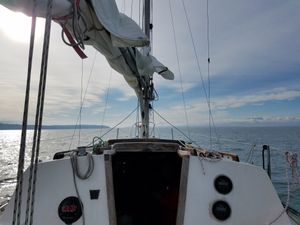The first time I saw Big Magic was on July 2, 2020. I promised myself I wasn't going to commit myself, sight unseen. However, after seeing her, I knew I couldn't say, "No."
The whole reason Big Magic's widow found me is because her friend saw my Craigslist ad, which touted my make-believe organization I named "The Society for the Prevention of Cruelty to Boats." I created it as a way of poking fun at my inability to say "no" to fixing up abandoned things. The truth is that I'm in denial of my hoarding tendencies. I promise though that I am NOT hoarding this boat. It WILL float again before October.
On July 7th I revisited Big Magic, and that day, her widow decided to hand me the title to the boat before I could change my mind -- literally handed me the title as I climbed onto the boat. I love this woman! She was wise to do that, because upon closer inspection that second day, I discovered that Big Magic was completely infested with wasp nests. And I mean COMPLETELY.
Here are pictures of the prettiest ones. (There were more nests that I didn't stop to take pictures of because they weren't pretty enough!)
 Wasps in the ventilation hose
Wasps in the ventilation hose
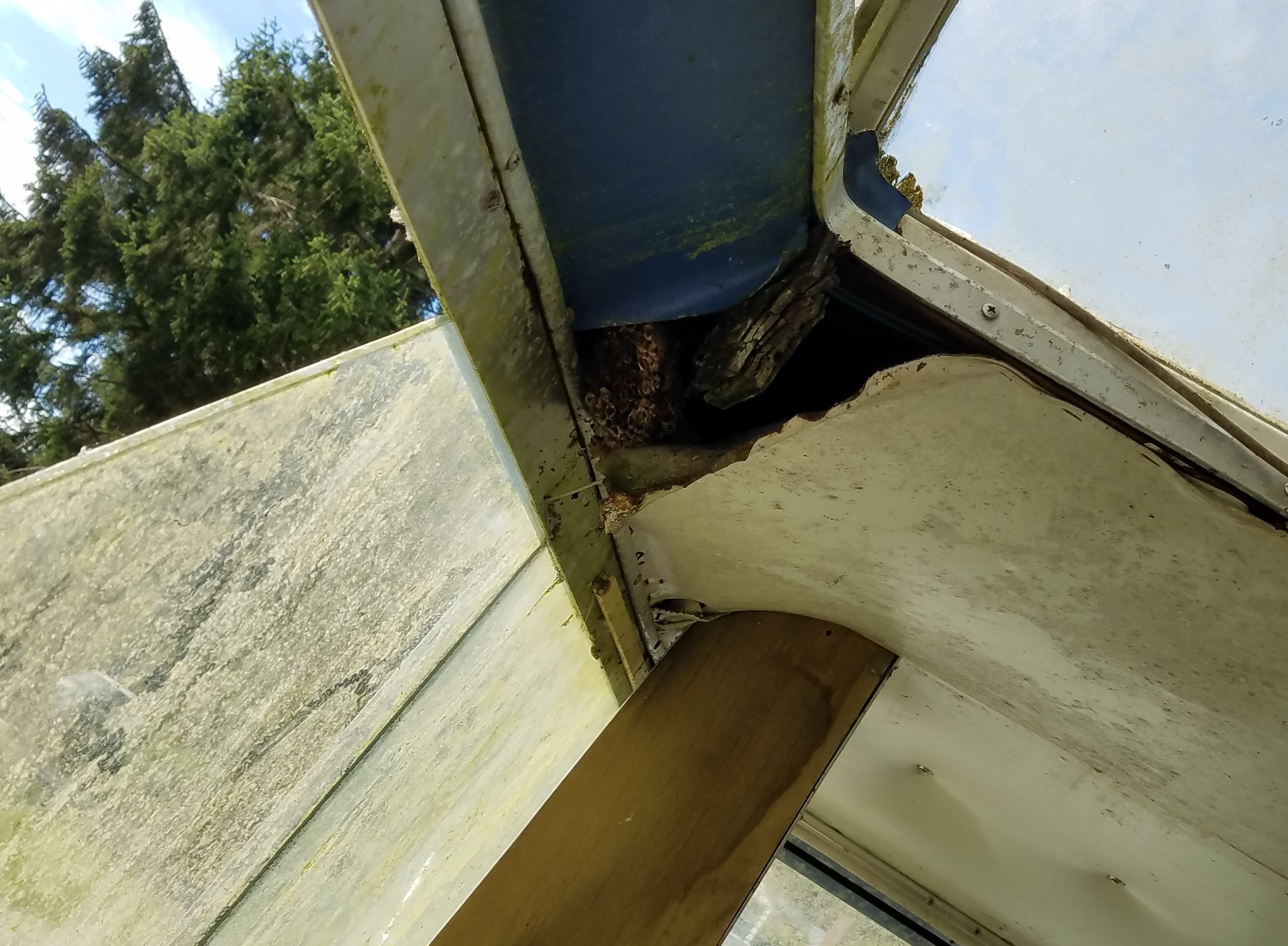 Wasps in the galley headliner
Wasps in the galley headliner
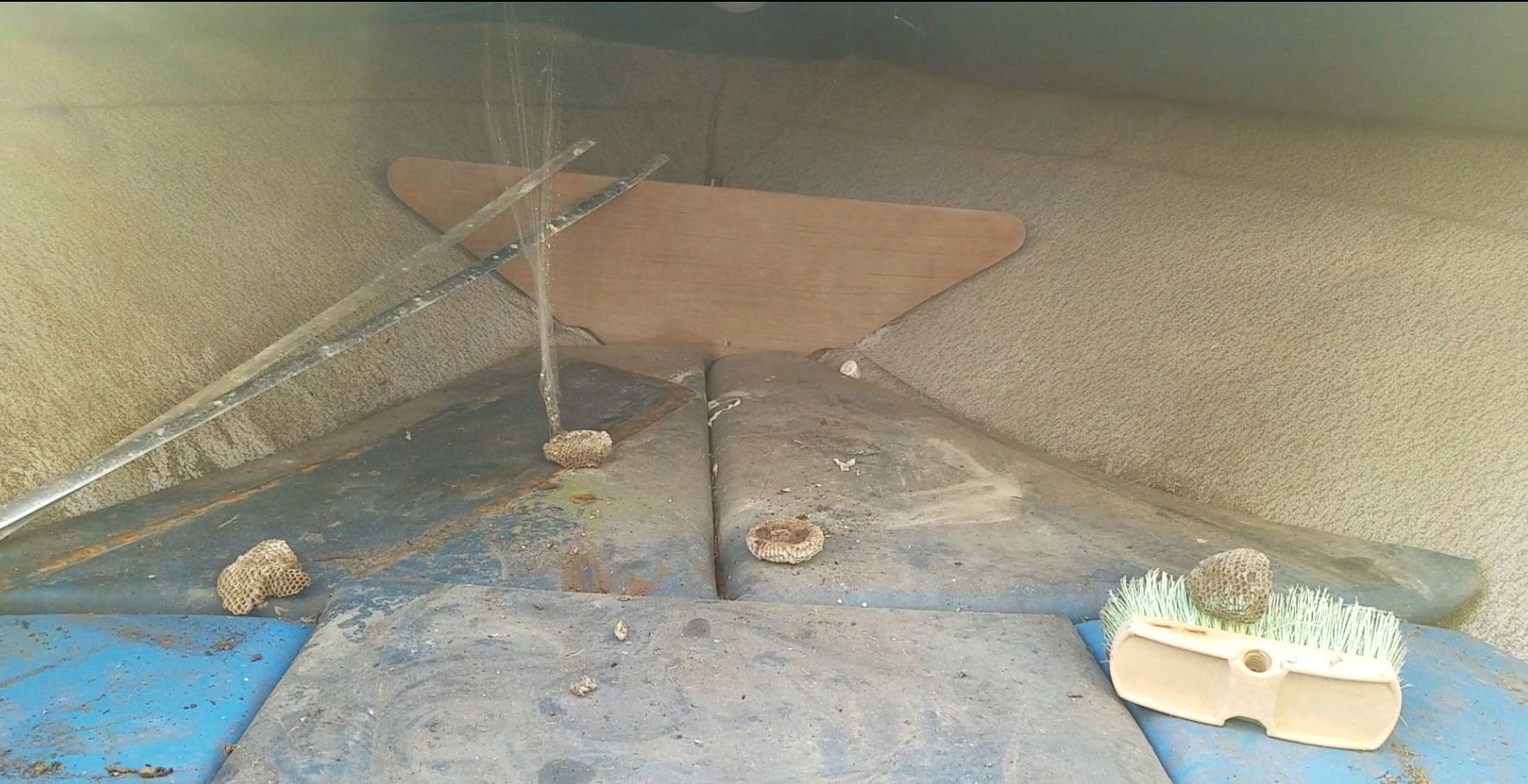 Wasps in the v-berth
Wasps in the v-berth
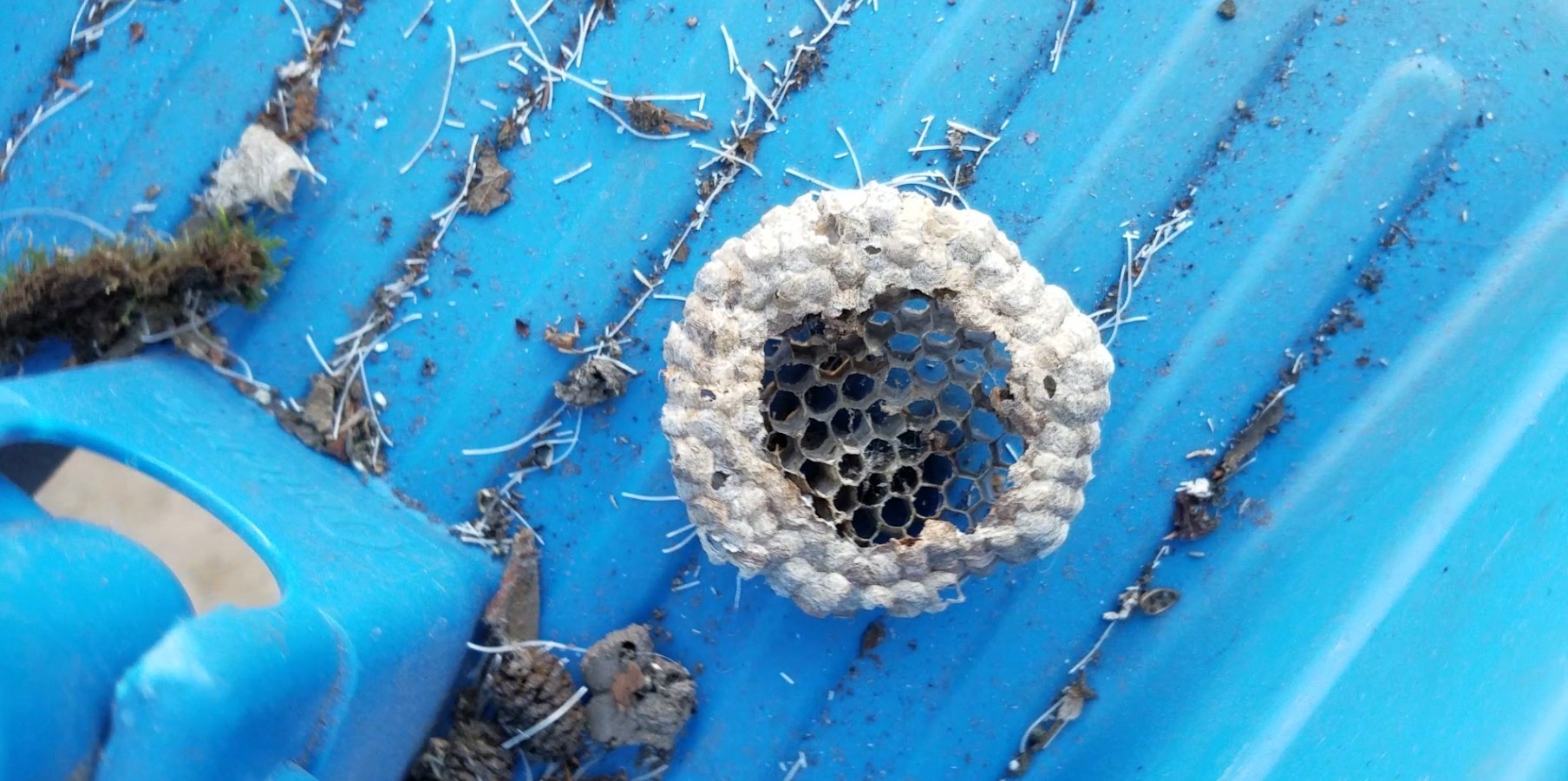 Just a pretty wasp nest
Just a pretty wasp nest
When I was ten years old, I was stung by wasps. I was playing ball in our backyard and accidentally threw one over the fence. So I climbed onto our air conditioning unit to climb over the fence to retrieve it, and didn't realize it was home to a wasp nest. I was probably stung three or four times, and my foot swelled up so big I couldn't wear my tennis shoes to play T-ball that day. So, I have a healthy respect for wasps wanting to protect their babies.
I didn't want to spray them, because I know the insecticides also affect bees. However, after several days of going back there and removing all the rotten boards they were using to make their paper mulch and still finding new nests every time, I ended up buying a $2-can of spray from Sebo's. (It was on sale.) Then over the course of two to three weeks, I peeled back layers of rotten wood and moldy vinyl headliner to de-home them.
In the process, I also discovered mason bees. When I found mason bee eggs inside the wood trim, I had no idea what they were. However, I posted a picture on my Facebook site, and one of my fellow Northwest School of Wooden Boatbuilding graduates informed me they were mason bees. Here's a picture of the first eggs I found. Aren't they cute? I re-homed them.
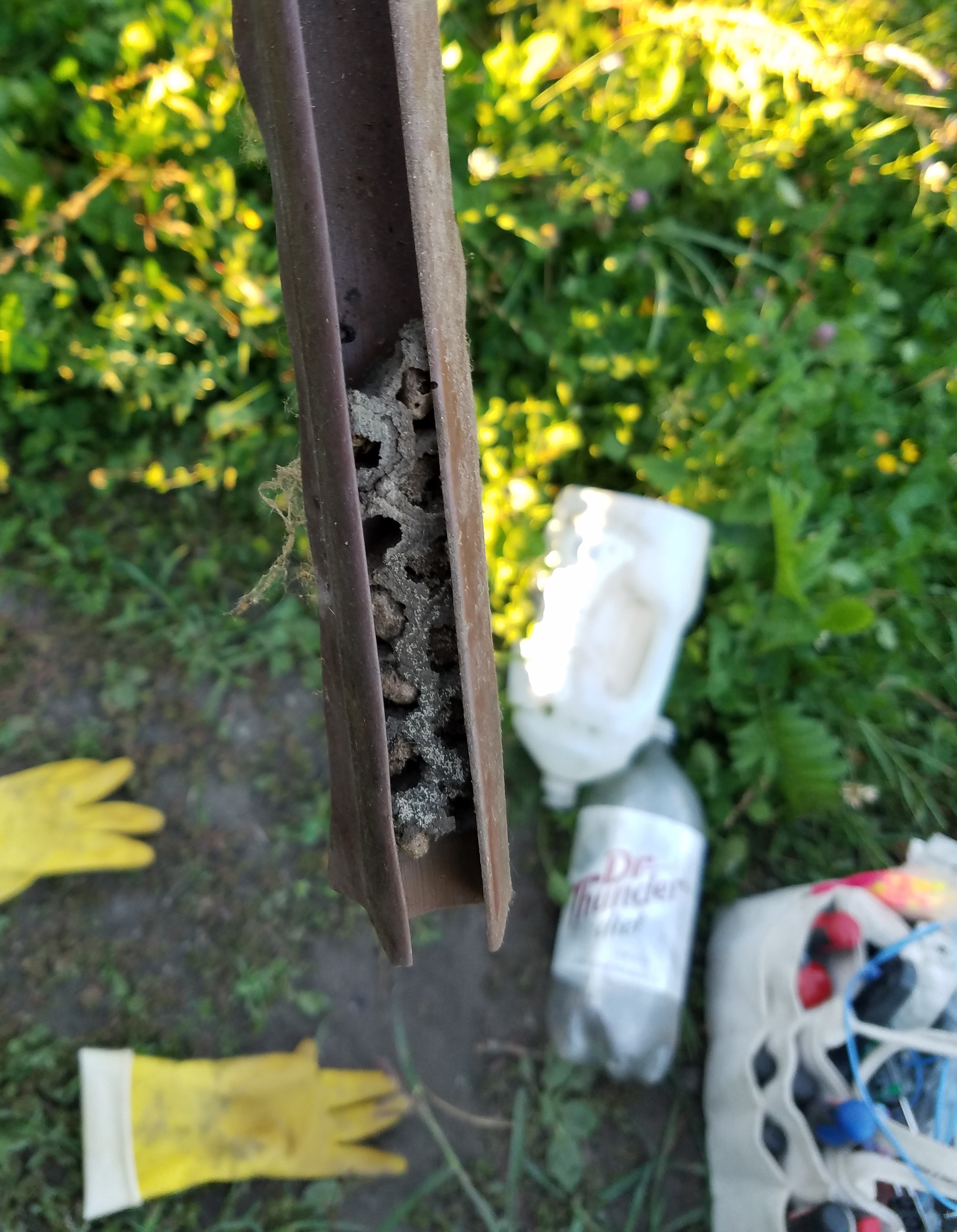 Mason bee eggs in the trim I removed from the rotten pilots chair paneling
Mason bee eggs in the trim I removed from the rotten pilots chair paneling
I found mason bee eggs in all sorts of places, such as in the nail holes left after I pulled out boards and in the pee-hole of the massive stern drive. So when I pulled the stern drive off, I set it upright against a log, so the larvae would continue to develop normally. You see, they have to be in the orientation they were laid, because Momma-Bee puts the pollen they will eat on the bottom of the egg case, so it's easier to find when they hatch.
I didn't expect that I'd learn bee-keeping in the process of boat restoration. However, mason bees are such fascinating insects, I found myself wanting to know more about them. There is so much to be found by Googling. Mason bees don't produce honey directly, but they are fantastic pollinators (because they're clumsy like me). Hence by increasing pollination, they increase flowering plants that honey bees can harvest. So they do increase honey indirectly!
Mason bees do not live in hives as honey bees do. Mason bee females lay their own eggs and feed their own larvae. They are the queen and the worker of their "colony" at the same time. I admire mason bees so much, because they're a lot like me.
